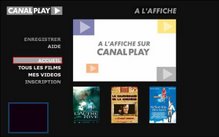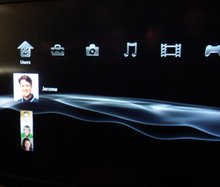Active-TV ecosystem developers,
Much of the converge market dreamers have focused on premium video content distribution via IPTV. What might be called a type or pear-pressure may have driven participation in a frenzy of legal, content protection and revenue sharing issues. This may have contributed to the downfall of the UK BT entertainment chief after his statement: “It’s not about the content”; He was replaced with a former Universal Studios executive with plans for a BT [UK telco] television service.
Over at the BBC they are no less ambitious, but certainly more restrained about the imminent dominance of IPTV – BBC director: “I’m not a swivel-eyed looney that sees the end of conventional television overnight”.
IMS Research estimates that by the end of 2005, there were over 9 million integrated DVRs shipped worldwide. Growth in the DVR market is expected to come primarily from operator deployments [MSOs]. By the end of 2010, a forecast 136 million TV households worldwide will employ an integrated DVR box.
The ability of DVR to erode TV advertising revenue is not part of the familiar convergence frenzy. Advertising erosion is in a denial stage, as there is no agreement on an alternative; and denial is seen as better than panic. Interesting, the erosion of linear-TV advertising is likely to be most significant in the US market where the uptake of IPTV is likely slowest.
As more considered views of convergence appear, Google wants to hire a “Product Manager for Interactive TV”. They will “identify key market trends that are shaping user behavior when watching Television”. Google go on to say: “intersection of internet and Television technologies, video-on-demand, DVR and emergence of next generation set-top-boxes with IP connectivity”.
Of interest is Google’s mention of the STB with IP connectivity – also know as the hybrid-STB. It is clear that hybrid-STB adoption is a significant trend. With Google’s increased attention to the hybrid-STB, maybe Intel will direct more effort to a ViiV hybrid-STB rather than ViiV DMA. AMD and active-TV partners appear ahead of both in terms of an Extended-PC and hybrid-STB ecosystem development.
The 10-foot role of the Extended-PC is to run media application software – then project the UI over the home network to the TV. With the inclusion of advanced video CODEC support in the STB SOC, the hybrid-STB can directly support IP-TV viewing. A PC in the living room is not the only way to view IP-TV. The Extended-PC may have more of a role in supporting new forms of TV advertising. Active-TV developments have been pushing relevant developments. They already have projects, plans and collaborators for the support of new forms of advertising supported by an active-TV ecosystem
Google hopes to identify “search and advertising technology”, for which they can no doubt be a key supplier. Search engine usage is a widely accepted 2-foot PC task. This has enabled Google to develop a 2-foot advertising business. It is not clear that TV watchers want a 10-foot search engine; after all, the TV is an entertainment device, not an information device. Search engine usage may not give Google the ‘TV exposure’ and hence an advertising role. Maybe the advertising support role falls more naturally to the IPTV aggregator; Or to those able to synchronise media applications to IPTV or broadcast TV service.
Comments, corrections and feedback welcome










